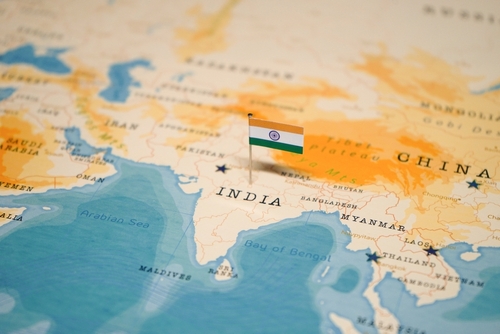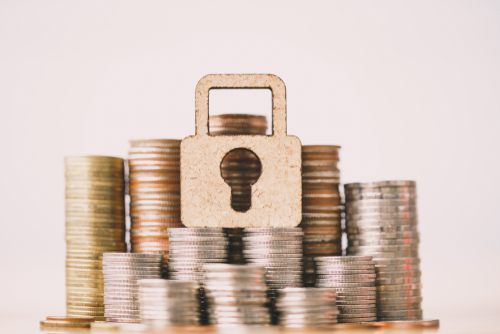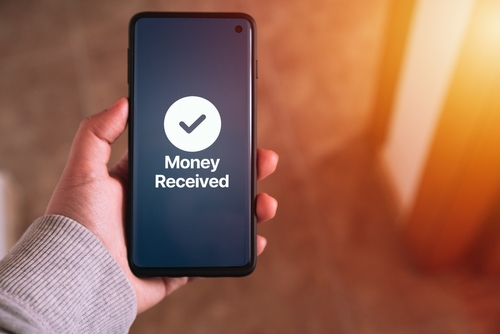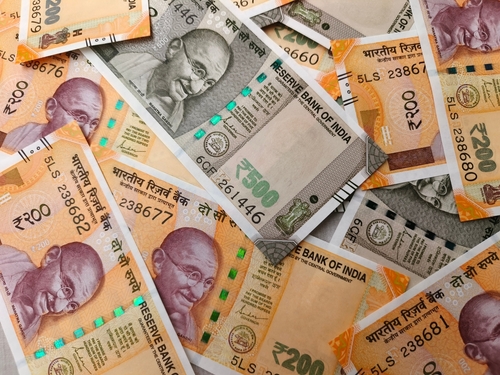Sending money to family and friends in India is an important way to show you care, meet obligations, or create new opportunities. While the intention is simple, the process of transferring funds internationally can feel complicated. India has its own financial systems and regulations, and understanding them is key to a smooth and successful transfer.
This guide will walk you through the essential information you need before sending money to India. We will cover transfer methods, costs, delivery times, and safety tips to help you make informed decisions. By the end, you’ll feel more confident about navigating the process and ensuring your money arrives safely where it needs to go.
Are You Allowed to Send Money to India?

Yes, you can send money to India, but it’s important to understand the regulations and protections involved. The process is governed by rules designed to ensure transfers are legal and secure. Generally, personal remittances for family support, gifts, or education are straightforward. However, for larger amounts or business-related transfers, you may need to provide additional documentation.
Key considerations include:
- Recipient Information: You will need your recipient’s full name, address, and bank account details, including their account number and the bank’s IFSC (Indian Financial System Code). Ensure this information is accurate to avoid delays.
- Purpose of Transfer: Some services may ask for the reason you are sending money to comply with anti-money laundering (AML) and Know Your Customer (KYC) regulations.
- Licensed Services: Always use a licensed and regulated money transfer service. These companies are authorized to operate and adhere to strict compliance standards, which protects both you and your recipient.
What Are the Typical Transfer Methods?

You have several options for sending money to India, each with its own set of advantages and disadvantages. The best method for you will depend on your priorities, whether that’s speed, cost, or convenience.
- Bank Transfers: Sending money directly from your bank account to an Indian bank account is a traditional and secure method. While reliable, it can sometimes be slower and more expensive than other options due to correspondent bank fees and less favorable exchange rates.
- Digital Transfer Apps and Online Services: Companies operating online or through mobile apps specialize in international money transfers. They often offer competitive prices and faster delivery times. This is one of the most popular and convenient ways to send money today.
- Cash Pickups: Some services allow you to send money that your recipient can collect in cash from a physical location in India, such as a local bank or agent office. This can be a useful option if your recipient doesn’t have a bank account or needs funds urgently.
- Mobile Wallets: With the rise of digital payments in India, sending money directly to a mobile wallet like Paytm or Google Pay is becoming more common. These transfers are often instant, but they may have lower transaction limits.
How Long Will It Take for the Money to Arrive?

The time it takes for your money to reach India can vary significantly, from a few minutes to several business days. The speed of your transfer depends on several factors:
- Transfer Method: Digital transfers are often the fastest, with many arriving instantly or within a few hours. Bank transfers typically take longer, ranging from 2 to 5 business days.
- Payment Method: How you fund the transfer matters. Paying with a debit or credit card is usually faster than paying with a bank account, which may require extra processing time.
- Time and Day: Sending money during business hours generally results in quicker processing. Transfers initiated on weekends or public holidays (in either your country or India) may be delayed until the next business day.
- Verification Requirements: If the service needs to verify your identity or the source of your funds, the transfer may be held until the review is complete.
What Are the Costs Involved?

Understanding the full cost of your transfer is crucial.
Transfer Fees: This is the service charge for processing your transaction. It can be a flat fee or a percentage of the amount you send. Some services offer zero-fee transfers, but it’s important to check all the details.
To find the best deal, always compare the total cost. Ask yourself: after all fees and the currency conversion, how many Indian Rupees (INR) will my recipient get for the amount I’m sending?
Send money to India with Remitly.
Get a special rate on your first transfer, plus no fees on your first two transfers.
Get Started
Are There Limits on How Much You Can Send?

Yes, there are often limits on how much money you can send to India. These limits are set by the money transfer service, your payment method, and Indian regulations.
- Service Limits: Most companies have daily, weekly, or monthly transfer limits. These can vary based on your account history and the level of verification you’ve completed.
- Regulatory Limits: Under India’s Liberalised Remittance Scheme (LRS), there are limits on how much money can be received from abroad for certain purposes. While personal remittances usually fall within these limits, it’s good to be aware of them.
- Documentation: For larger transfers, you will likely need to provide additional identification and documents proving the source of your funds. This is a standard security measure to prevent fraud and money laundering.
How Safe Is It to Send Money to India?

Sending money internationally is very safe as long as you use a reputable and secure service. Here are some tips to protect your money and personal information: Always verify the recipient’s details and ensure that you are using a trusted service. If you are unsure about your options, research how to send money to the philippines and check for user reviews and ratings. Additionally, consider using services that offer tracking and support to give you peace of mind during the transaction.
- Choose Regulated Providers: Look for services that are licensed and regulated by government authorities in the country they operate from.
- Check for Security Features: Ensure the company’s website and app use SSL encryption to protect your data. A secure website’s URL starts with “https://”.
- Read Customer Reviews: See what other users are saying about their experience with the service. Look for feedback on reliability, speed, and customer support.
- Beware of Scams: Be cautious of anyone asking you to send money for an emergency you can’t verify, to claim lottery winnings, or for an online purchase from an unknown seller. Never share your transfer confirmation details with anyone other than your recipient.
What Should the Recipient Expect?

To ensure a smooth process for your recipient in India, it’s helpful to let them know what to expect.
- Bank Deposits: If you’re sending money directly to a bank account, the funds will typically appear automatically. The recipient won’t need to do anything, but they should check their account to confirm receipt.
- Cash Pickup: For cash pickups, your recipient will need to visit the designated agent location. They will need a valid government-issued photo ID (like an Aadhaar card or passport) and the transaction reference number you provide them.
- Mobile Wallet Transfers: The money will be credited directly to their mobile wallet account. They may receive an SMS or app notification once the funds are available.
- Double-Check Details: The most common reason for delays is incorrect recipient information. Before you confirm the transfer, double-check the spelling of their name, their bank account number, and the IFSC code.
Key Takeaways for a Smooth Transfer
Sending money to India doesn’t have to be stressful. By keeping a few key points in mind, you can ensure your funds arrive safely and efficiently. Always compare services to find the best combination of low fees, a fair exchange rate, and a delivery speed that suits your needs. Prioritize security by using a regulated provider, and carefully verify all recipient details before hitting “send.”
If you have questions about a specific transaction, check with your chosen service directly for the most up-to-date information. A little preparation goes a long way in making the process simple and worry-free.
Quick Reference Chart
| Category | Money Transfers to India: Key Information |
|---|---|
| Legality | Legal with proper documentation. Provide recipient details and purpose. Use licensed, regulated services. |
| Transfer Methods | Bank Transfers: Secure but slower, may involve higher fees Digital Apps/Online Services: Fast, affordable, popular choice Cash Pickup: For unbanked recipients or urgent needs Mobile Wallets: Instant delivery to Paytm, Google Pay, etc., but may have lower limits |
| Speed | Instant: Digital apps and wallets 1–5 Days: Bank transfers, depending on method and timing Delays possible on weekends or public holidays |
| Costs | Includes transfer fees and exchange rate margins. Always compare total INR received, not just upfront fees. |
| Limits | Varies by provider and Indian regulation. Larger amounts require ID and source-of-funds documentation. |
| Safety | Very safe with regulated providers. Use encrypted websites, check reviews, and avoid scams. Never share passwords or transaction info. |
| Recipient Experience | Bank Deposits: Auto-credit to account Cash Pickup: Requires ID and reference number Mobile Wallet: Instant notification via SMS or app Tip: Double-check name, account number, and IFSC code to avoid delays |
| Best Practices | Compare services for rates, fees, and speed. Use secure providers. Verify all recipient info before confirming the transfer. |
Frequently Asked Questions (FAQs)
What is the best way to send money to India?
The best method depends on your specific needs. Online money transfer services are often the quickest and most cost-effective option. Banks and wire transfers offer security but may have higher fees or longer processing times. Compare services based on exchange rates, fees, and delivery speed before deciding.
How long does it take to transfer money to India?
Transfer times vary by service. While some online platforms offer near-instant transfers, traditional wire transfers can take 2-5 business days. Check with your chosen provider to confirm processing times.
Are there limits on how much I can send?
Yes, most money transfer services and banks set limits on the amount you can send, either daily, monthly, or annually. Be sure to review these limits in advance, and consider breaking larger transfers into smaller amounts if necessary.
Is it safe to send money to India?
Yes, as long as you use a reputable provider. Ensure the service you choose uses encryption and fraud protection measures. Always double-check the recipient’s details to avoid sending money to the wrong account.
